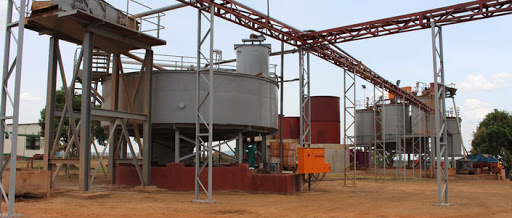Goldplat plc (LON:GDP) Chief Executive Officer Gerard Kisbey-Green caught up with DirectorsTalk for an exclusive interview to discuss their latest operational update
Q1: You have noted at a new Mining Charter that’s been announced in South Africa, what are the implications for Goldplat?
A1: Yes, the new 2017 Charter was announced last week on the 15th, this Charter wasn’t really fully discussed or negotiated with the Chamber of Mines or indeed the industry and it contains some far-reaching, some new and some pretty drastic changes. Goldplat Recovery, which is our South African subsidiary, is currently compliant with the proceeding Charter, if the announced 2017 Charter is implemented the major changes that we will need to implement are increasing our Black Economic Empowerment, as we call it BEE shareholding from the current 26% to 30% and also increasing the representation of previously disadvantaged person across our management structures. That said, the Chamber of Mines has voiced its objection to the Charter and they plan to instigate legal proceedings to interdict the implementation of the Charter in its current form. So, it’s not a major concern to us as Goldplat Recovery but if it is implemented, we will have to make certain changes.
Q2: You’ve announced that Kilimapesa Gold mine is now operating profitably as a result of the processing plant expansion, can you elaborate on the process and perhaps give us a feeling for what we can expect going forward?
A2: Interestingly, I believe it’s now 10 years and 1 week since we first announced via RNS the joint venture at Kilimapesa so the property development has been a long time coming and we’re very pleased to be there now.
We completed the installation of Stage Two and the expansion project and we are now producing, at the plant, a rate of 120 tonnes per day on a fairly consistent basis. Now, through May and so far through June, we’ve been hitting that rate quite regularly, at this rate and assuming we maintain the grades and the recoveries we’ve planned, we are profitable. I expect that we will probably have been profitable in May, as said, and then June and we should have completed the commissioning of Stage Two by the end of June.
So, going forward, if we continue to produce at this rate, which we plan to, annualised that will yield close to 5,000 ounces of gold per year and of course make decent profits. Once we’ve stabilised at these rates and we’re consistently profitable, we’ll make a decision on the Stage Three expansion.
Q3: Now, I note that you’re no longer moving one of your spare 4-tonne elution plants from Goldplat Recovery to Gold Recovery Ghana but you’ve acquired another plant which you will install in Ghana. Can you explain the rationale behind this change?
A3: Sure, this change does warrant explanation. We had, as you said, a plan to install a 4-tonne plant in Ghana, we have the columns and some of the ancillary equipment and infrastructure and were planning to acquire and build what we didn’t already have. The plant cost of that entire project was in order of about $2 million, we had actually began shipping steel work up to Ghana when a second-hand complete 3-tonne elution plant came onto the market in South Africa so we made an offer out of Gold Recovery Ghana which was accepted for 2 million Rand, which is about $155,000.
So, this is accepted, we’ve now dismantled the plant, moved it to GPR for clean-up and refurbishment and we’re now in the process of shipping it to our operation in Ghana for installation and commissioning which we planned for December 2017 completion. So, the overall cost of this now is expected to be less than $1 million and the commissioning will be 6 months earlier than the milestones stipulated the by the government in the terms of our gold licence.
So, basically, we save $1 million, more or less, we’re coming into production in Ghana earlier and we still have a leftover plant in South Africa for potential installation elsewhere some time it’s required.
Q4: Finally Gerard, can you comment briefly on Goldplat’s progress in South America?
A4: It’s been slow but steady progress, it’s tough moving to completely new markets. We’ve been sourcing materials from various clients in South America and indeed in North America for some time now, mainly in the way of trials and this has been very successful. At the same time, we’ve been negotiating larger longer-term contracts with a number of clients, I’m very very pleased to say that we recently signed the first of these longer-term contracts and the initial shipments of about 360 tonnes of carbon on the water bound for Ghana and some of them might have even gone already with shipments of rubber mill liners being finalised at the moment.






































